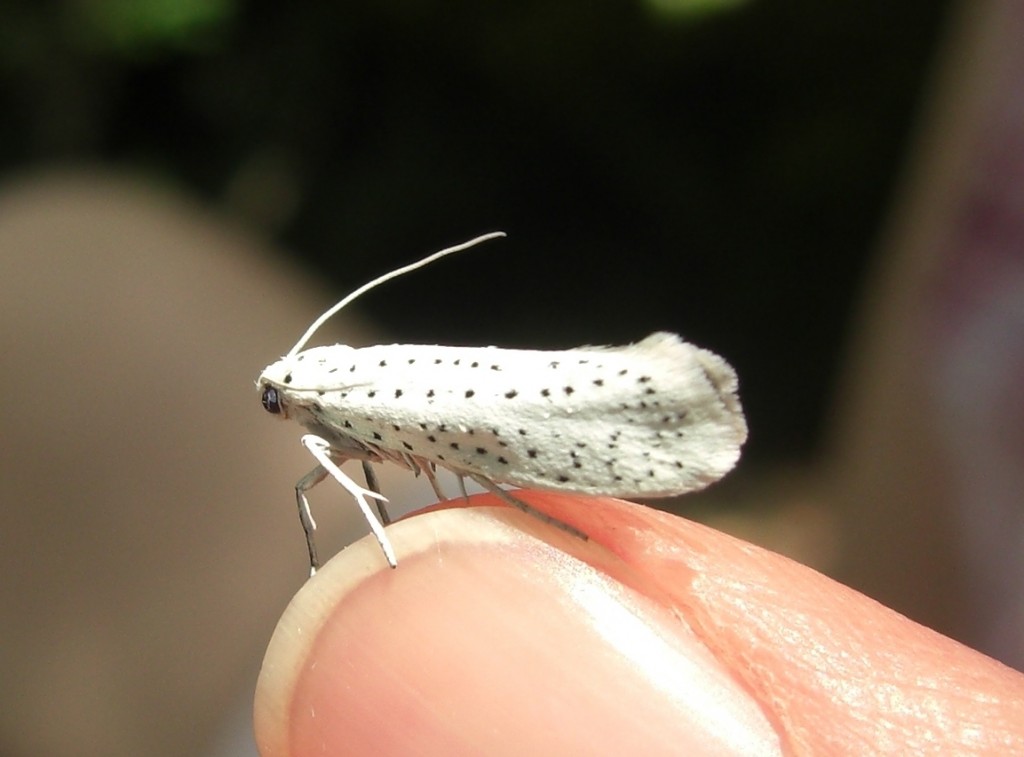The most disliked moth?
Over the past few weeks visitors to the Falls of Clyde have been getting in touch concerned about a certain little caterpillar whose food plant is the bird cherry. This is my fourth season here at the Falls of Clyde and in that time these little guys have caused a right old fuss. They tend to be voracious little eaters, stripping many trees completely bare of leaves and covering them in a giant web. There are also many bird cherries that aren’t touched at all but if you don’t know what a bird cherry looks like you wouldn’t realise this.

The bird-cherry ermine is a micro-moth and is easy to identify because it has a specific food plant. It is worth noting that it is in the moths own interests not to kill the plant that it grew up on as it will then laying their eggs back on the same trees. The tiny caterpillars that then hatch out, overwinter on these trees and then start munching again once there are plenty of leaves back on the trees in late spring. In warmer years, like this one, the caterpillars are particularly abundant, in cooler years – less so.
After the caterpillars have all pupated and turned into moths, the trees will have chance to recover and after another month or so you would struggle to know it had happened at all. I must admit it can be quite disturbing to see, but these trees have adapted to their hosts. The great thing is that all these caterpillars provide an excellent food source for all the young chicks we currently have growing up on the reserve.
Laura Preston – Scottish Wildlife Trust, Falls of Clyde Ranger
Help protect Scotland’s wildlife
Our work to save Scotland’s wildlife is made possible thanks to the generosity of our members and supporters.
Join today from just £3 a month to help protect the species you love.
Preface
Over the past few weeks visitors to the Falls of Clyde have been getting in touch concerned about a certain little caterpillar whose food plant is the bird cherry. This …
